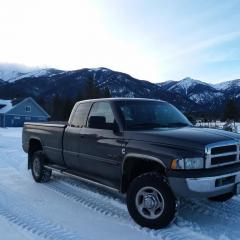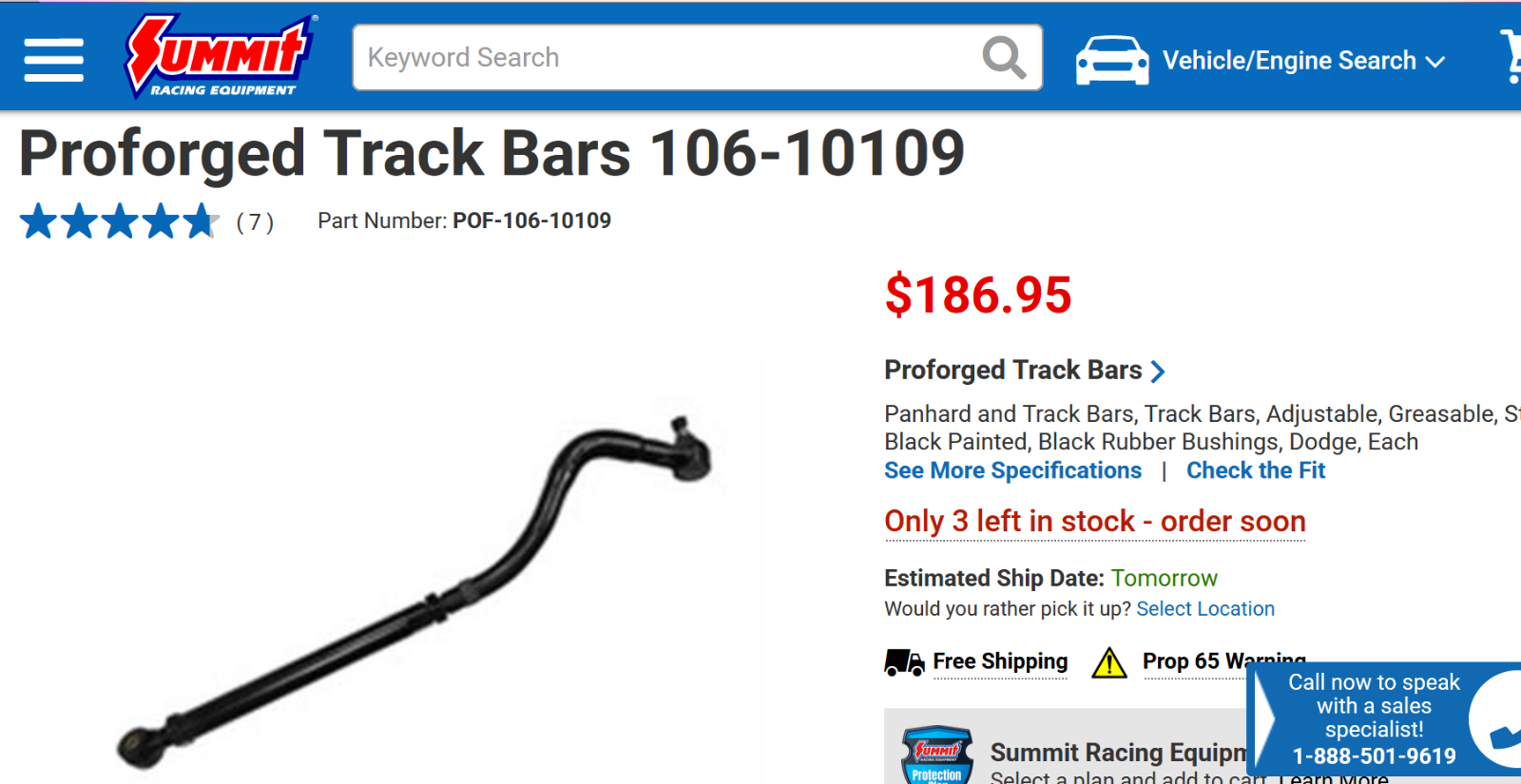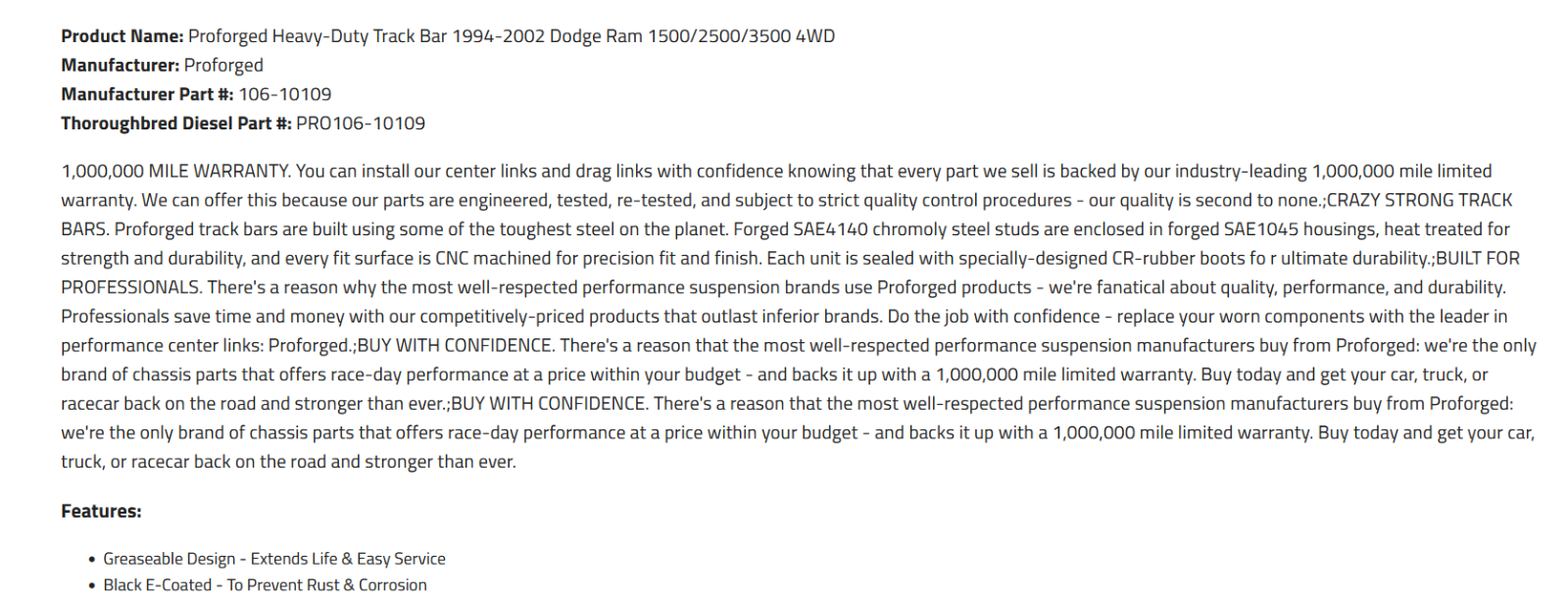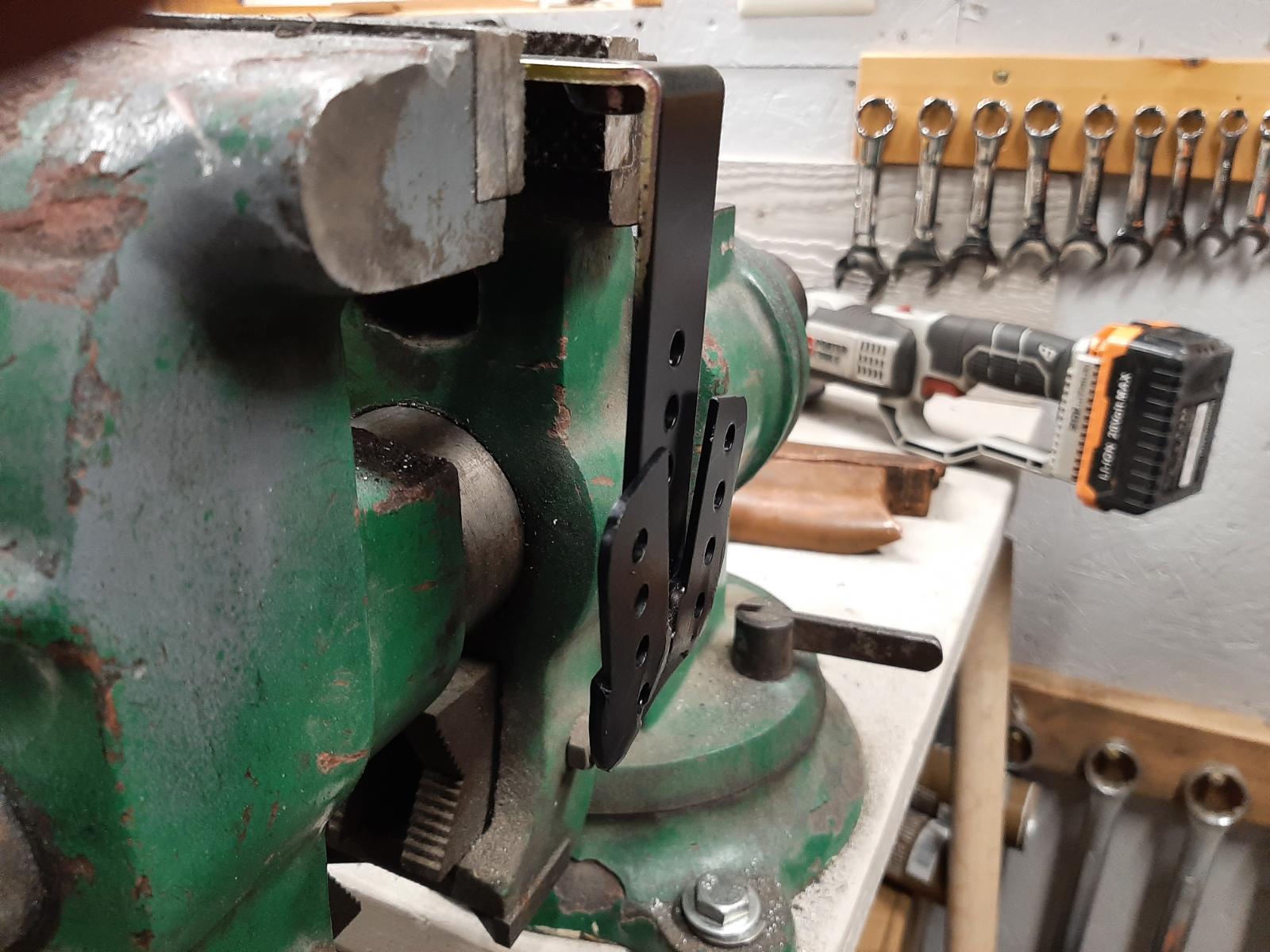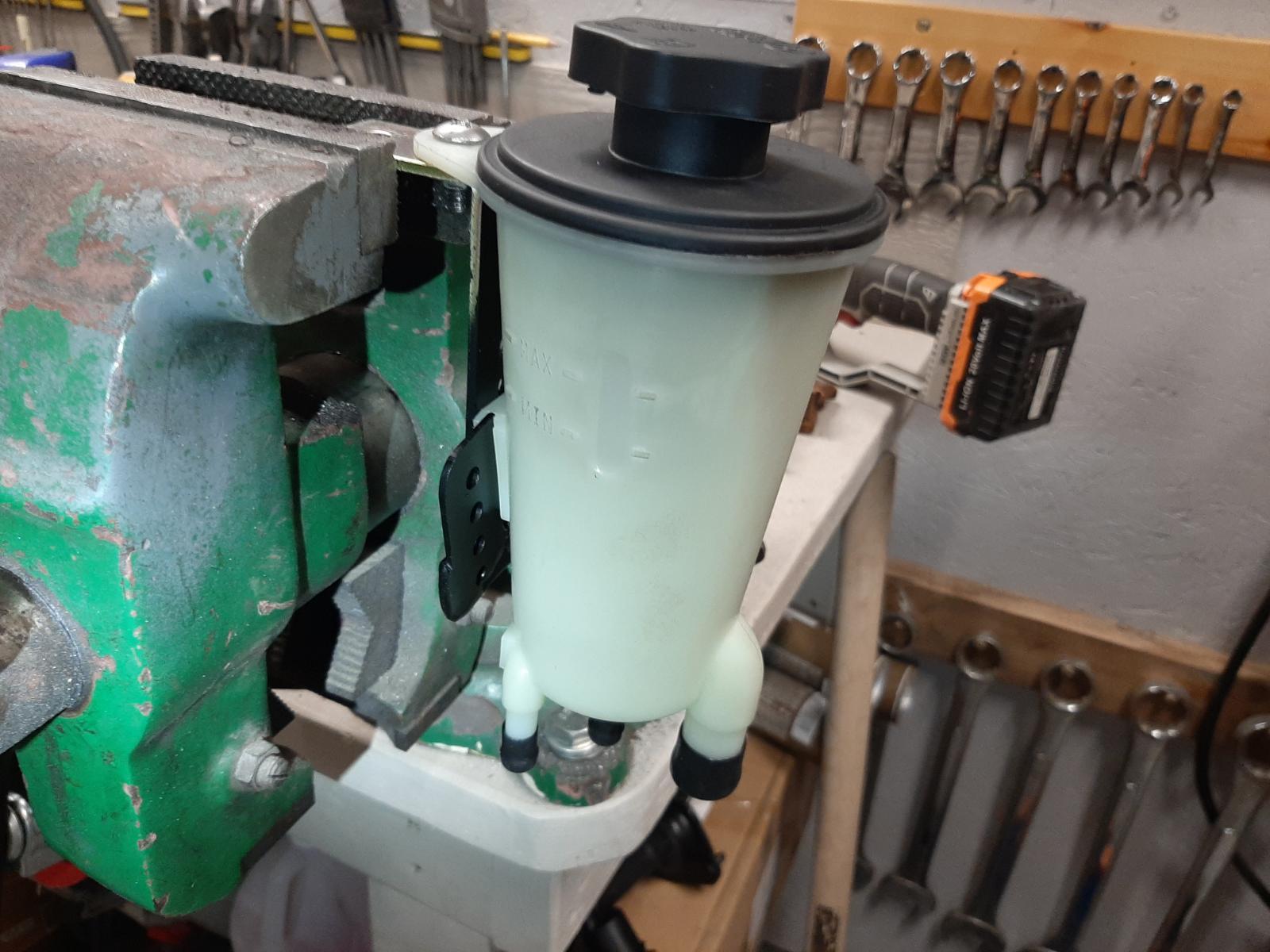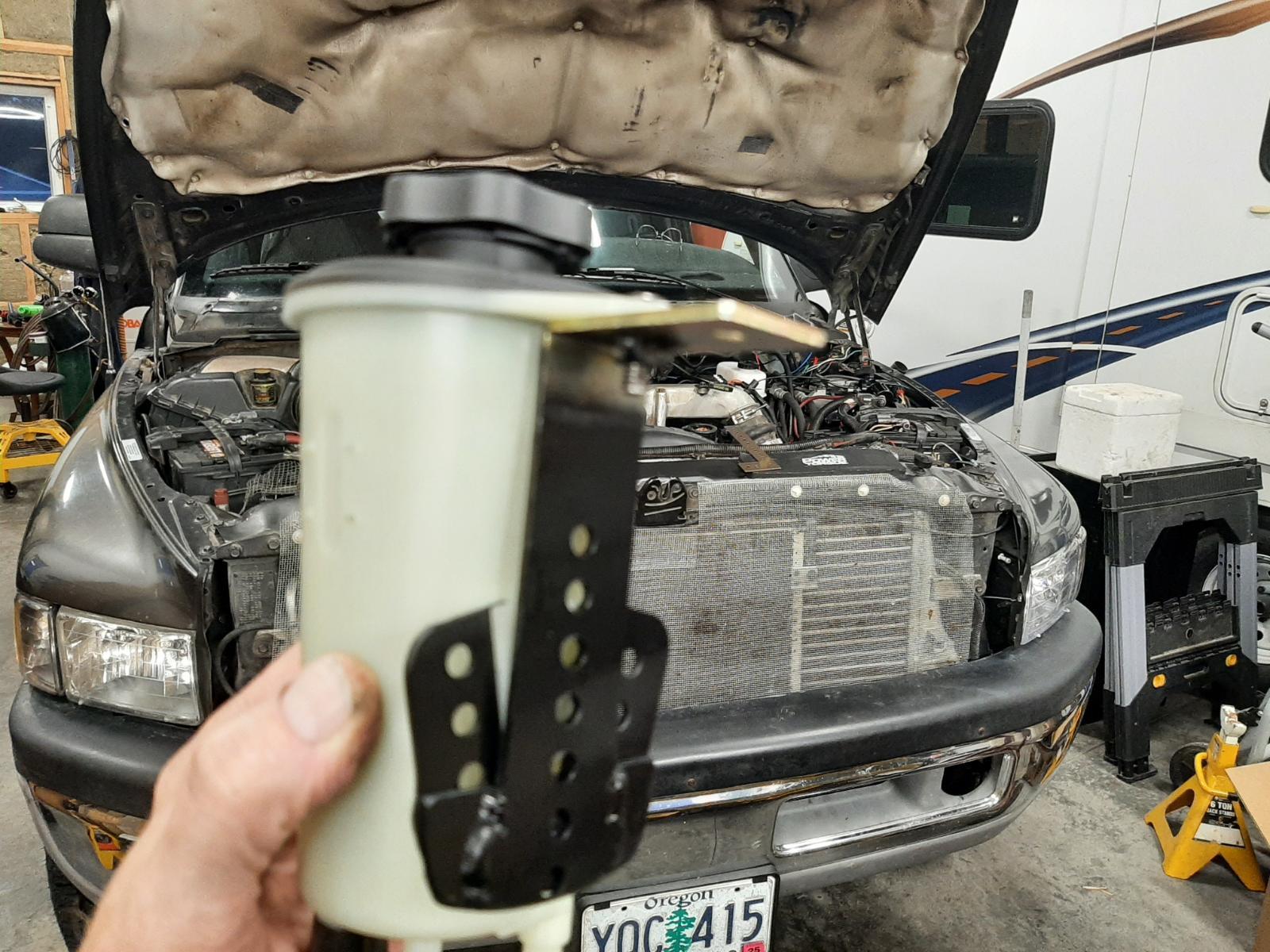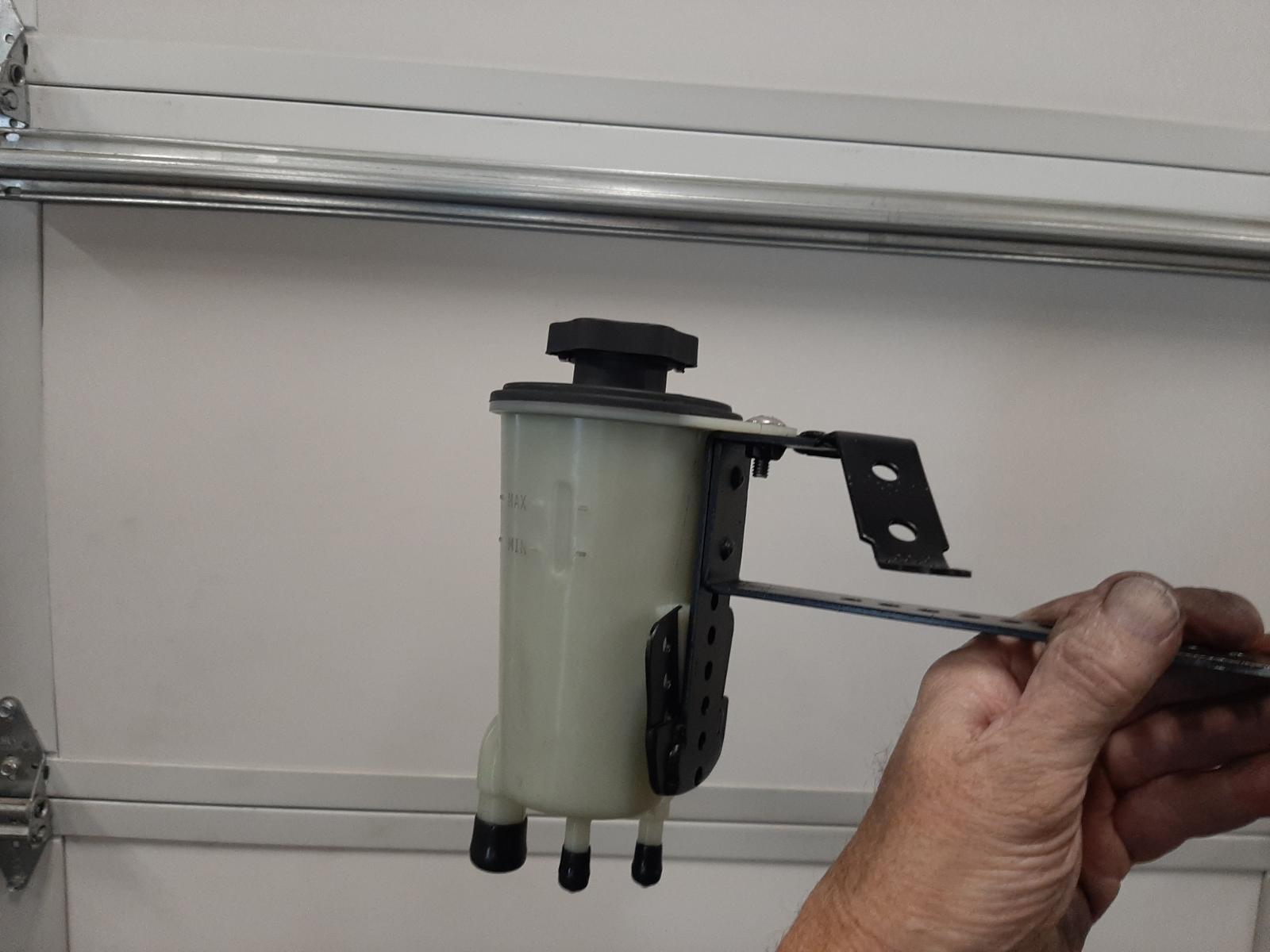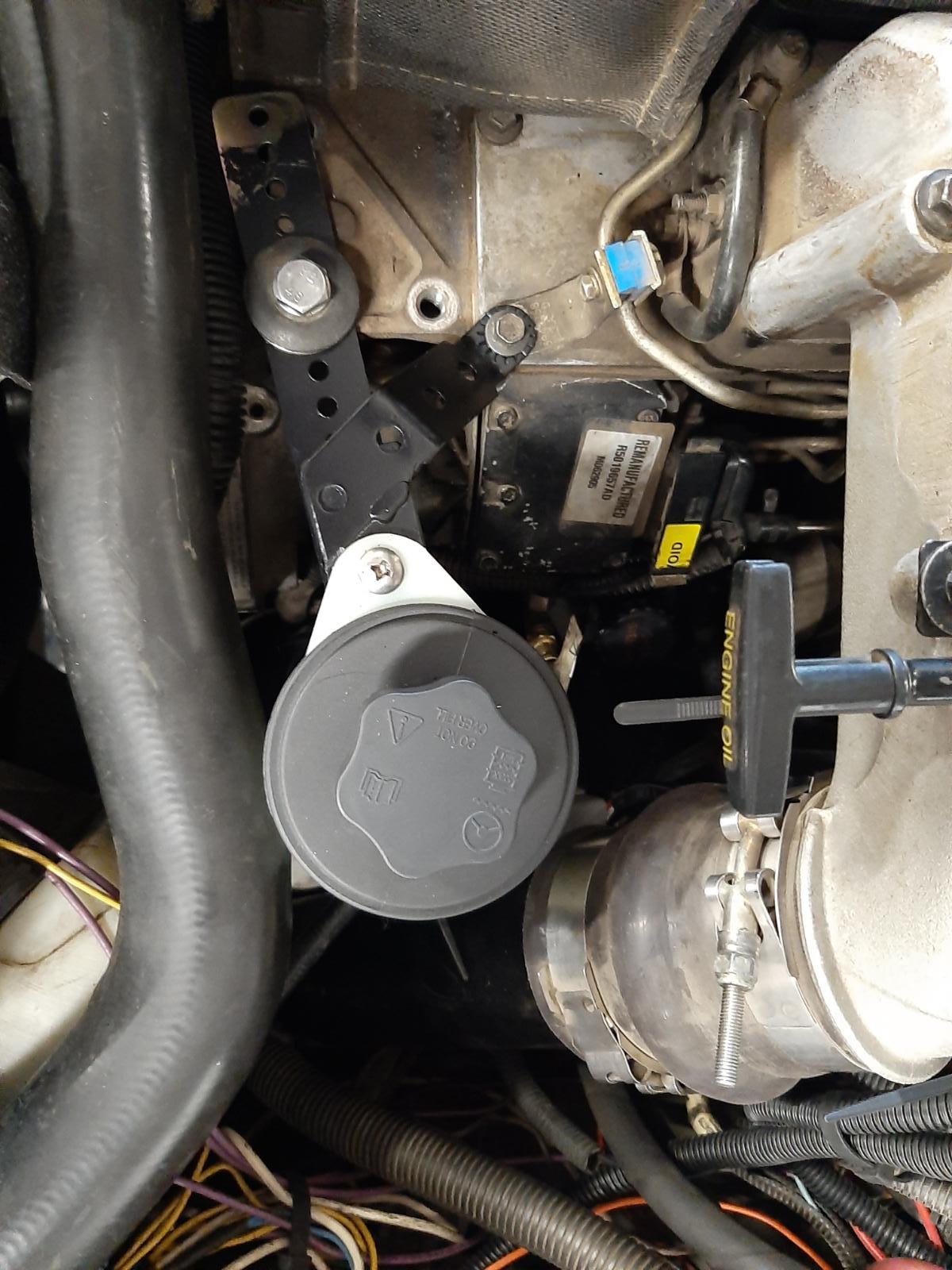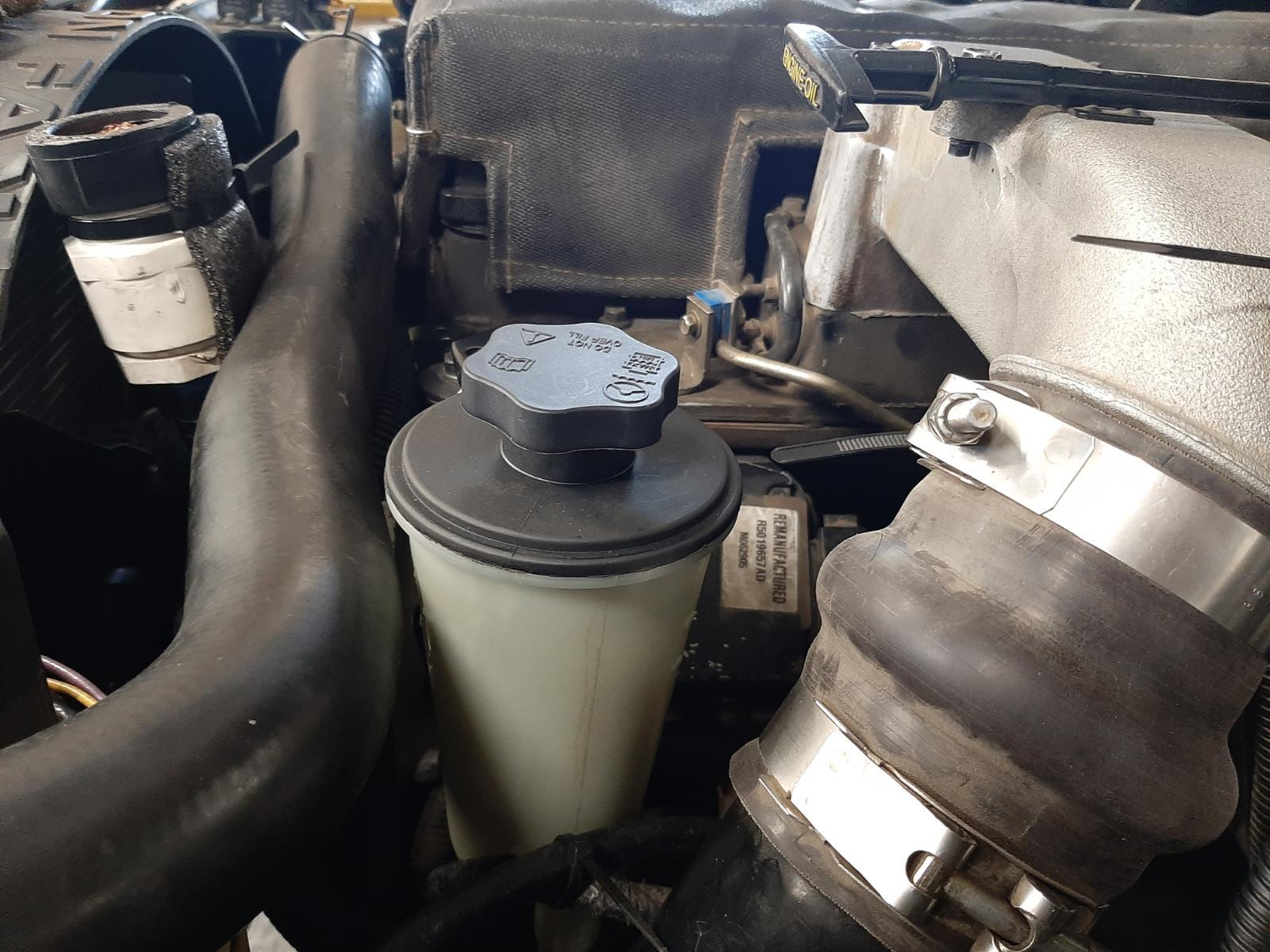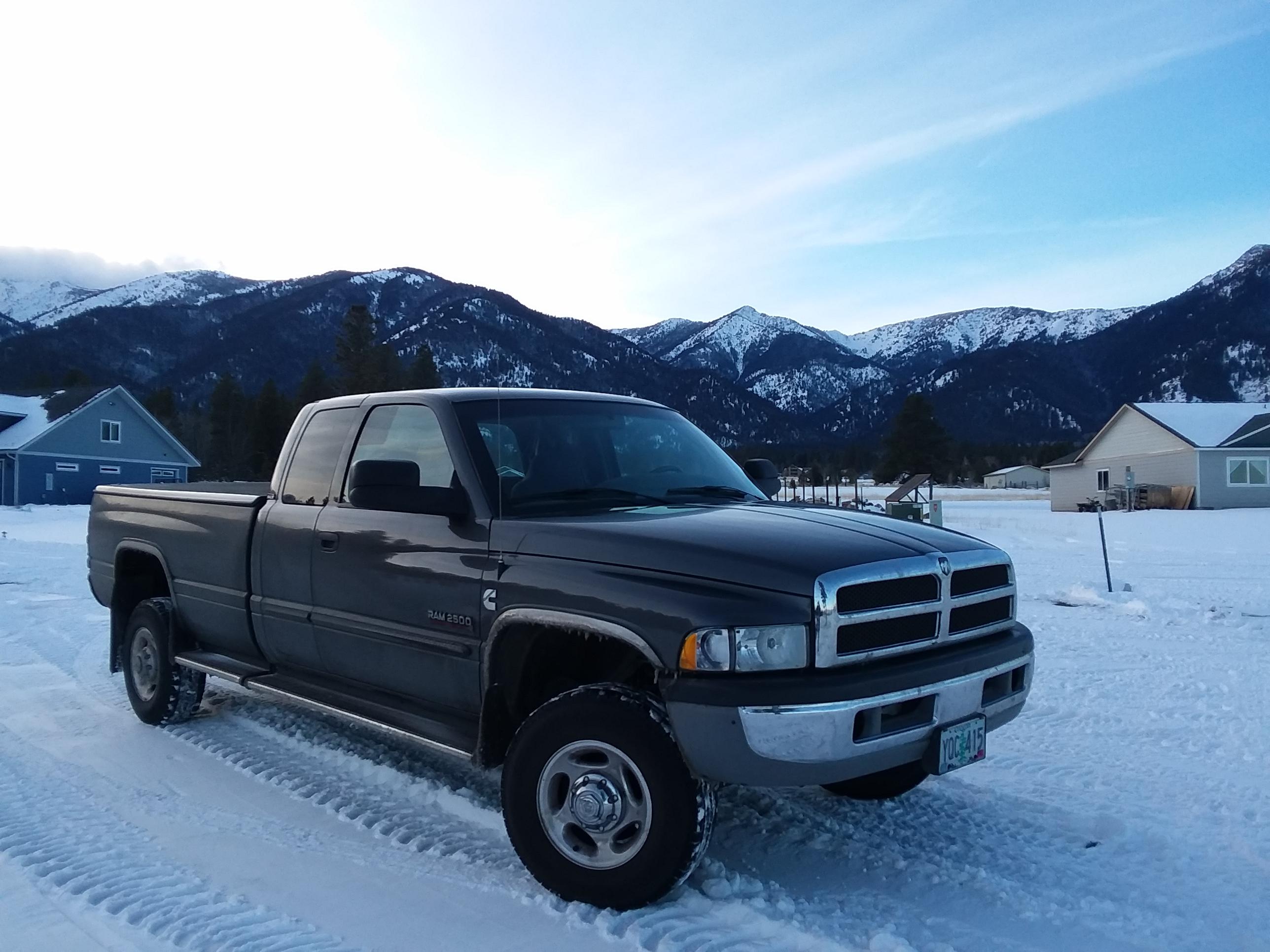
Everything posted by Tractorman
-
Track Bar
This is the track bar I just put on my truck - called Proforged. It is adjustable (after installation), heavy duty, and has an excellent seal on the ball joint, AND it's reasonably priced. I have only logged 22,000 miles on mine, but I think it is going to be a keeper. There are several sources to purchase them. - John
-
Track Bar
Also, without a dense rubber bushing on one end of the track bar, every pulse of energy generated from the road will transfer through the track bar to the frame, then the body, then to you. I don't think you would like that. - John
-
Hi everyone
Welcome to the site! It's great to see someone having the insight to buy a troubled truck and turned it into an affordable, reliable work truck. - John
-
Is my grid heater dying?
Just curious, are you replacing the original OEM style, and what are you replacing them with? I just replaced uppers and lowers last week (395,000 on OEM arms). I replaced with OEM style complete arm assemblies. I put the old ones in a vise and one by one slipped a large pry bar into each of the holes to see how much flexing was going on. They were all tight, so I didn't expect to see much performance difference with the new ones. However, I was wrong, the new ones performed much better. Before I started the repair, I did notice on one of the lower bushings that one end of the outer steel cage was no longer pressed tight into the control arm. This is what triggered the idea of replacing all of the control arms. Using the same caster adjustment that I had previously used, I set the caster to maximum on the right control arm and then I set the caster to just slightly less than maximum on the left control arm. I did this cross caster adjustment to accommodate for road crown. It turned out great. Just did a 500 mile road trip and between @Mace's power steering pump mod and the new control arms, the truck handles excellent. Very stable, tracks straight, and tracks in and out of curves effortlessly. - John
-
ECM or something else?
Sorry, I missed that in your original post. That tells me that you are NOT having a fuel or air in the fuel issue, which is what you are already thinking. So, you could very well have an issue with the ECM / PCM as you stated, or you could be getting a severe voltage drop at the PCM, ECM, or PSG on the VP44 while the starter is cranking. I would think that a code would be set, but not necessarily. - John
-
ECM or something else?
When I am troubleshooting difficult issues, I try to eliminate things that may contribute making troubleshooting harder. For example: if your fuel tank is half full or less, then I would go fill the fuel tank. If the engine now starts easier, then you know that fuel has been draining back and drawing air into the system. The fuel can still drain back, just not as easily with a full tank. Since this is a new to you truck, have you checked to see if there are signs of fuel leaking on the banjo fitting and T-fitting on the back of the head? A leak here will definitely cause hard starts, especially if the nose of the truck is parked up hill. The used tubes will still be in a different rotational position than when you removed them. Did you try my suggestion? - John
-
ECM or something else?
Have you push-started the truck with the same results BEFORE you tried starting the engine with the starting motor? If not, the engine may have coincidentally been ready to start during the push-start. After a night of setting, try doing a push-start without use of the starter beforehand. If the engine starts right away, this could indicate that there is an excessive voltage drop to the ECM or to the VP44 solenoid valve when the starter motor is cranking the engine, consequently, no fuel. If the engine still doesn't start right away, then this is not likely a cause. As far as the one injector line that is leaking, it is not unusual a line to leak at that connection point with new crossover tubes. Each injector line seals as a metal to metal sealing connection at the crossover tube. The new crossover tubes may have a slightly different surface sealing area shape than the old crossover tubes. Try loosening nearby clamps and then loosen the offending injector fitting. As you are re-tightening the nut, try rotating the line back and forth slightly while maintaining some friction using the nut. The objective is to grind the two mating surfaces together to smooth out any surface irregularities. Don't be aggressive. - John
-
ECM failure
I believe that should be below .050 volts AC, or below 50 milli-volts AC. From Moparman's video: - John - John
-
Power Steering Pump / Vacuum pump Conversion
I purchased the Standard Motor Products vacuum pump - not sure about the quality. While performing these modifications, I also replaced my original vacuum operated exhaust brake (PacBrake) with an in-line PacBrake PRXB for better performance at low engine rpm. It uses an air cylinder, so the only vacuum load I have now is HVAC and the CAD unit on the front axle. The old vacuum operated exhaust brake served me well - 70,000 miles on my old '99 truck and an additional 393,000 miles on my current '02 truck. It will begin a new life on a site member's 2002 truck next summer. Is the Dorman vacuum pump any quieter? What brand was you original vacuum pump. - John
-
4.11 Rear end
Since it is not in his signature, I will add that Moparman's transmission is a NV4500. I believe he is in 5th gear and running 245/75R16 tires in his photo. - John
-
4.11 Rear end
The stock tire (listed in the driver side door jamb) is 245/75R16. The trucks were actually sold with 265/75R16's. Your tire is slightly larger diameter than stock. Trucks came with either 3.55's or 4.10's. My truck has 3.55 gears and 245/75R16 tires. In direct 1:1 gear ratio (5th gear with my NV5600) , my tach reads about 2000 rpm at 50 mph. If I had 4.10's, the tach would probably read about 2200 rpm. Since you have an NV4500, you would need to use 4th gear (1:1 ratio) to make the same comparison. Include a minor adjustment for your slightly larger tire diameter. - John
-
Power Steering Pump / Vacuum pump Conversion
@mace, I have performed the power steering pump and vacuum pump conversion that you brought to this site. I hope you are still perusing the site and will see this. The time and effort spent on this project (and the APPS relocate) has been very worthwhile. Much engine space has been freed up and the power steering reservoir is right where it should be for easy fluid check / fill. The reservoir is like the brake master cylinder reservoir – you can see the fluid level through the reservoir. An unexpected benefit is that this direct mount power steering pump outperforms any previous power steering pump that has been on this truck. There is no more stopping of the steering wheel when the power steering is under high demand, such as when maneuvering in tight spaces, steering from stop to stop with little forward or backward movement of the truck. I started the project by finding a location for the new power steering reservoir, which was going to be right where the APPS assembly used to be. Then I built a mounting bracket for the reservoir (shown below). The first part of the bracket assembly is designed to let the weight of the oil and reservoir rest in the V slot. In the above photo, note the welded nut where the tab on the top of the reservoir is screwed into the bracket. In the photos below, more brackets are added to fasten the unit to the engine. Below is the new location for the reservoir in the engine compartment - lots of space available for mounting with the removal of the APPS and APPS mounting assembly. I don't have any photos of the actual pump mount, but the mounting is straight forward, especially with the addition of studs instead of bolts. Much easier installation the old vacuum pump / power steering pump combination was. I didn't use a gasket - just the grey Permatex RTV gasket maker. The one thing that Mace did that I should have done (which he clearly mentioned) is to have the pump suction fitting turned down on a lathe from 22 mm to 19 mm to match the 19 mm connection on the reservoir. Because I didn't do that, I have not-so-neat connections from the pump suction to the reservoir (another reason to not take a photo down there). @Mace, thank you again for making this possible. That’s all, folks! John
-
VP44 bracket and power steering pump
I understand why you would have been concerned. Sounds like everything went well. You will know everything is fine when that engine clatters to life and there is not a pool of oil on the floor. - John
-
VP44 bracket and power steering pump
Since I have never done what you are describing before, I would listen to hear if the VP44 gear dropped just a little as you remove the vacuum pump. The VP44 gear may have been resting on the vacuum pump gear. The VP44 gear should still remain timed, but you may have to lift the gear a tad when you re-insert the vacuum pump. Just speculation. More than likely the VP44 gear will be resting on a shoulder inside the case rather than the vacuum pump gear. I would rather approach this cautiously. - John
-
VP44 bracket and power steering pump
The VP44 is connected and timed off of the camshaft gear. The vacuum pump is connected to the camshaft gear, but not timed. There is no connection between the VP44 gear and the vacuum pump gear. You should be okay to remove the vacuum pump / power steering assembly. - John
-
Driving with 5th gear removed
Yesterday, I put your situation in the "911" section of the TDR, but so far no response - but, it was a weekend. Here is what I posted, "Trying to help someone out here. Fellow has a '99 2WD Dodge Cummins truck. He is 1100 miles from home and has lost 5th gear. He wants to know if he can remove 5th gear and drive home, or if anyone knows of a reliable manual transmission repair shop in the Fort Myers, Florida area. Thanks," I let you know if / when I hear anything. - John
-
Another APPS Problem
! - John
-
Driving with 5th gear removed
@Mopar1973Man, this fellow needs your wisdom. I can't answer the question of driving the truck without 5th gear, but personally, it would drive me nuts to drive that far in fourth gear. I will check with the Turbo Diesel Register for a transmission shop recommendation in your area. Edit: I just made the request through TDR. - John
-
Help! No Power Steering or Brakes after vacuum pump swap
I just pulled the fitting from my old vacuum pump. The fitting is and straight adapter - 1/4" 37° male JIC x 1/8" male pipe. Before you replace the fitting, confirm which connection is leaking. If it is the JIC flare part that is leaking, try loosening the fitting just enough rotate the piping back and forth - be gentle. Keep the fitting tight enough to maintain some friction. Sometimes there is a burr or some surface irregularity that can be smoothed out by using this approach. If you have to replace the fitting: * Apply pipe tape or sealant (oil compatible) to male pipe end. This type of fitting is tapered and seals by thread interference as the fitting is tightened. Tape or sealant seals the potential spiral leakage that could occur around the threads. - John
-
Another APPS Problem
Let us know if the original problem is fixed after you drive your truck for a few days. - John
-
Another APPS Problem
Two questions that I was hoping you were going to answer: Question 1 - Does the one APPS reading that starts at "0%" go up to 100% at full throttle (key on, engine off)? Question 2 - What is your idle rpm?
-
Help! No Power Steering or Brakes after vacuum pump swap
Thanks for the followup report and I am glad that you are back on the road. At least you had the stamina to stick with it and figure it out. The actual hose connection is a 1/4" 37° flare (female on the hose side and male on the fitting side). I don't know the size or type of the end of the fitting going into the pump body. Usually this type of fitting is called an adapter fitting. If you can't get it figured out, let me know - I have a used vacuum pump in the shop with the fitting. Make sure you have the correct style and know the thread pitch, thread diameter, and whether it is metric or domestic. It can get very confusing quickly and you could ruin the threads in the pump if you install a fitting that is very close, but not correct. - John
-
Another APPS Problem
I think you are fine the way you set it. In fact, when I installed my Timbo APPS, I didn't even use a meter. I just screwed the mechanical idle screw inward until I heard engine rpm pickup and then I backed off the screw 1/2 turn. When I checked it with the OBDLinkLX scanner, the APPS signal read 0% at idle and 100% at full throttle and the appropriate per cent readings in between (key on, engine not running). On your Bosch scanner what does the manual say about these two different readings? Does the reading showing "0.0%" at idle go to 100% at full throttle (key on, engine not running)? I haven't experienced using a meter that gives two APPS readings like your Bosch meter. You need to know what your meter is telling you. I think you have something else going on here. This is a very limited circuit - it only involves the APPS and the ECM and ECM power and ground (refer to the wiring diagram). If stray voltage is getting into the circuit from interference, or a poor ground, it could make it appear that there is a problem with the APPS. All the setting and resetting of the APPS won't help. - John
-
Another APPS Problem
Did you perform the above test? What code number was set? You say "codes", not "code" - what other code numbers were set? - John
-
Another APPS Problem
Incorrect. The purpose of the test is to see how much AC ripple is present FROM THE ALTERNATOR while the alternator is charging. Just make sure the grid heaters have finished post cycling and that there are no other heavy electrical loads operating. - John


